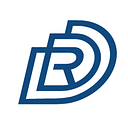The Arrival of ETH 2.0 — DREP Will Further Drive Web 3.0 Adoption in a Top ETH Project Capacity
On September 15, 2022, the world of technology has witnessed Ethereum’s successful shift to Proof-of-Stake consensus, which marks a major milestone of the entire crypto industry.

One of the main catalysts for this revolution can be attributed to the calling for higher blockchain performance and efficiency, which coincides with DREP’s core virtue to the market. The post-merge effects are by and large manifested in energy saving and security; however, under the hood, it will lead to huge progress in both technical designs and economic models, especially for Web 3.0.
From 2018, DREP has made to the front for DApp deployment, breaking away from the shackle of data segregation and poor public chain performance. In the light of the Web 3.0 revolution, DREP identified the importance of credit issues, and started shipping Web 3.0 toolkits and applications that combine ease of use, flexibility, and frictionless integration, e.g. DREP Credit, DREP DID, DREP Crossing, and etc. Additionally, innovative solutions, such as DAO governance tool, Web 3.0 DID model, are proposed to get Web 3.0 adopted en masse. What’s brought in organically are awards upon the top-tier networks like ETH, BNB, based on rise of our native token $DREP.
Under the upgrade of Ethreum, DREP will contribute joint efforts in a top ETH project capacity to bring Web 3.0 to the next level!
Ethereum Entering a New Era of PoS
So, what exactly is ETH Merge?
Originally, Beacon Chain is Ethereum’s Proof-of-Stake layer running in parallel with Ethereum mainnet, and the mainnet has now merged together with Beacon Chain to form what we call ETH 2.0. The major change will be the transition from PoW to PoS consensus, which means the upgraded Ethereum will allow block creators to be chosen in a deterministic way based on their stake, unlike PoW, which requires energy-intensive mining process.
The post-merge crypto world would see a deeper level of decentralization, as PoS mechanism favors no more nodes with high-tech mining rigs, instead, everyone would have a chance to stake a certain amount of asset and take part in the validation process, ecosystem governance, and splitting rewards. While seeing a bigger picture, the much attention to ‘The Merge’ suggests that the crypto world is expecting an ecosystem that is greener and more democratic, which will lay the groundwork for DREP to build up atop and enable further adoption in the Web 3.0 space.
Carry on the Web 3.0 Power Enabled by ETH 2.0
Compatible with EVM, DREP enables our clients to run Ethereum smart contracts with no barriers. Meanwhile, DREP ecosystem adopts DBFT, a consensus mechanism that combines DPOS (Delegated Proof of Stake) and PBFT (Practical Byzantine Fault Tolerance). Similar to PoS adopted by ETH 2.0, DPOS is a derivate consensus mechanism that features democracy, as trusted nodes to validate transactions are voted by stakeholders. DPOS ensures higher scalability as it does not demand expensive equipment, allowing for a wider participation, which falls into the philosophy of ETH merge.
In addition to a democratic network, DREP delves into developing practical tools and products that help builders frame an ideal Web 3.0 economy. DREP GameFi 2.0 tool, for example, is aimed to onboard more Web 2.0 games into the crypto world, and help equip existing Web 3.0 games with an all-round business model; DREP SDK and Plug-in will increase scalability and lower the barrier of integration, so that more market verticals will benefit from frictionless Web 3.0 interactions come with DREP technology.
DREP’s Pursuit of Further Web 3.0 Adoption
As The Merge is a transition of the underlying consensus mechanism, there won’t be any instantaneous changes to end users. While in the long term, DREP sees a positive trend for all users within the ecosystem. Considering PoW brought about unsteady services to users caused by fluctuated gas fee, PoS is expected to enable users to enjoy more smooth on-chain services, such as DREP DID at a reduced cost.
Ready to onboard a wider userbase, DREP has been constantly visioning practical structures and mechanisms to facilitate Web 3.0 growth. Take DAO (Decentralized Autonomous Organizations) as an example, DREP has formed a bottom-up DAO governance structure that integrates a Web 3.0 ID system and credit tools, to help DAO participants seize their due power and exert their proper rights; Meanwhile, DREP’s DID system is a prelude of a reputation-based Web 3.0 society, or a DeSoc (Decentralized Society) according to Vitalik, founder of Ethereum. As introduced in the previous article, DREP’s DID system has the potential to entrust Web 3.0 society with full utilization of NFTs including the SBT (SoulBound Token).
Read more on DREP’s insight into a Web 3.0 DID system: https://medium.com/@drep-foundation/drep-did-the-essence-of-web-3-0-socialization-in-desoc-91408aa8c38c
The Merge is the beginning of a new era, and the whole crypto world is looking forward to seeing what’s next. As a top project in ETH ecosystem, DREP is confident to remain high-level competence along the burgeoning industry, and be a pioneering project to expand Web 3.0 adoption along with Ethereum 2.0 revolution.
References:Weyl, Eric Glen and Ohlhaver, Puja and Buterin, Vitalik, Decentralized Society: Finding Web3’s Soul. URL: https://ssrn.com/abstract=4105763.
For more information,
Telegram group: https://t.me/drep_foundation
DREP Twitter: https://twitter.com/DrepOfficial
DREP Official Website: https://www.drep.org
DREP Credit: https://credit.drep.org
